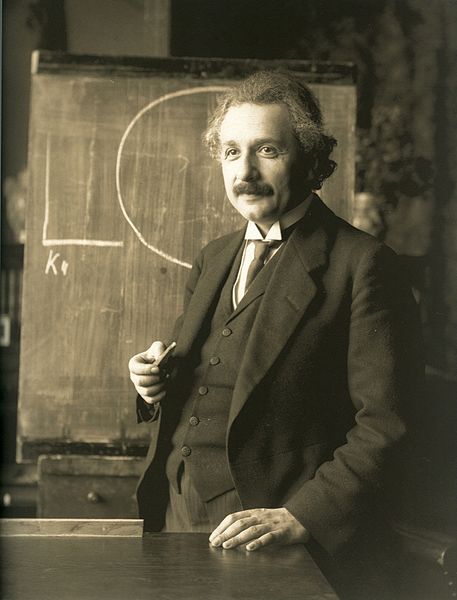Michele's blog
New article on testing GR
2012/07/20
I wanted to celebrate my birthday by posting a new preprint on the arXiv, but JPL wanted to make sure first that I wasn't giving away any big secrets (really), so I am a few days late. Nevertheless, I am happy that it's out now, and I think that it carries a useful result. Let me see if I can tell you briefly about it in this blog post. (That would be a nice tradition to start, wouldn't it?)
The first direct detection of gravitational waves (let's say 2015, with Advanced LIGO?) will be an epochal event, not because anybody doubts they exist, but because it is so technically difficult and it will have taken so long to see them. Beyond that, the excitement of our field lies in the prospect of using gravitational waves to learn about astrophysical systems that we cannot access with electromagnetic observations, and to learn about the very dynamics of the gravitational field.
General Relativity (GR), Einstein's theory of gravitation, is exceedingly well tested, but only in regimes where gravity is relatively weak and where the nonlinear, dynamical character of the gravitational field is not fully manifest. Gravitational-wave (GW) observations promise to change that: for instance, the signals that we will observe from the last phases of binary inspirals carry the imprints of truly strong gravity, and they could show us whether GR, or some other theory, is the true theory of gravitation.
Now, different kinds of tests have been proposed to test GR with GWs, but in all of them the variety of possible waveforms that we could observe from astrophysical sources is extended by including additional parameters that describe the strength and structure of non-GR corrections. These parameters may be foundational (e.g., the strength of the scalar-field coupling in a scalar–tensor theory) or phenomenological (i.e., we may take one of the coefficients that describe the frequency evolution of binary-inspiral signals, and let it wander from the GR prediction). Either way, the strength of GR-by-GW tests is characterized by how accurately the additional parameters can be pinned down to their GR values.
So finally I get to the content of my article. There is an even more cogent way to decide between two models with different parameters, given a set of data. This is Bayesian model comparison, a statistical method that takes into account not only how well the data are fit by the models, but also how unlikely the required model parameters are (this is in effect a version of Occam's razor). In general, applying model selection to GR-by-GW tests is an analytically involved and computationally expensive business, and it must be redone anew for every different source and alternative-gravity scenario.
In my article I show that, under the assumption of sufficiently strong GW signals, computing a single number is sufficient to fully characterize the GR-by-GW tests by determining how strong a signal (or equivalently, how close a source) would be needed to conclusively pick alternative gravity over GR in model selection—of course, if GR really is wrong! This number is the fitting factor, which in this case quantifies how well a pure-GR waveform can approximate an alternative-gravity waveform, if we are free to optimize the values of all the GR parameters (such as binary masses, spins, and so on). If the effect of alternative gravity can be fully reabsorbed by changing the GR parameters, then it will be completely unobservable, because we won't know these a priori, but we need to extract them from the GW signal.
My simple formula tells us, for instance, that for the signal strengths that we expect from second-generation detectors such as Advanced LIGO, we could only detect alternative-gravity effects that lead to 1 to 10% modifications of waveforms (fitting factors of 0.9 to 0.99). Thus, more exacting tests of GR may have to wait for third-generation instruments such as the Einstein telescope. Space GW observatories such as LISA would have detected very loud signals from many sources, but its launch has now receded beyond the horizon of most astronomers (to 2025, or beyond).
My hopes for this article are that it will simplify the work of some theorists, save a good number of computer cycles, and also that it will lead to more reliable, if less striking, claims about the science payoff of GW detectors. We shall see!
© M. Vallisneri 2014 — last modified on 2012/07/20
